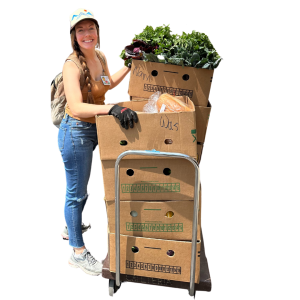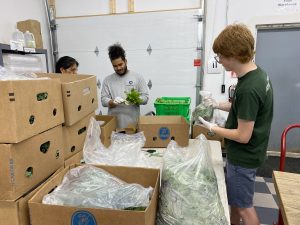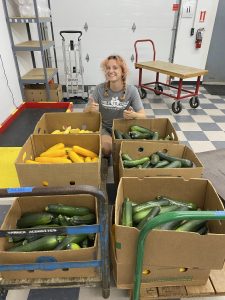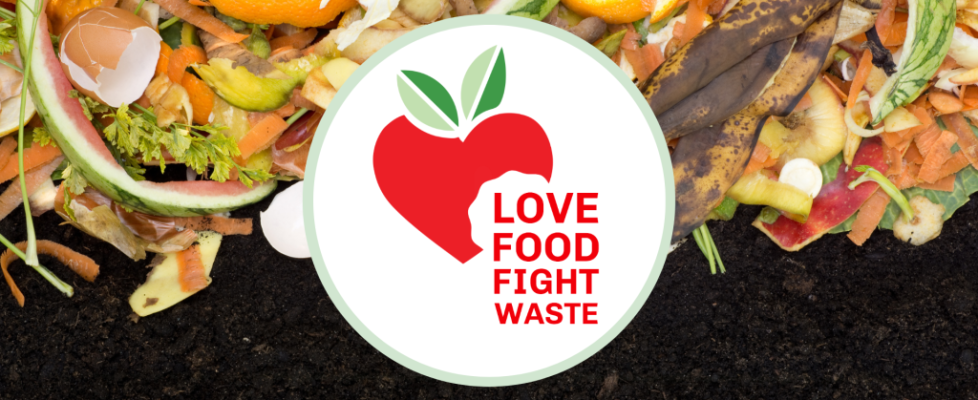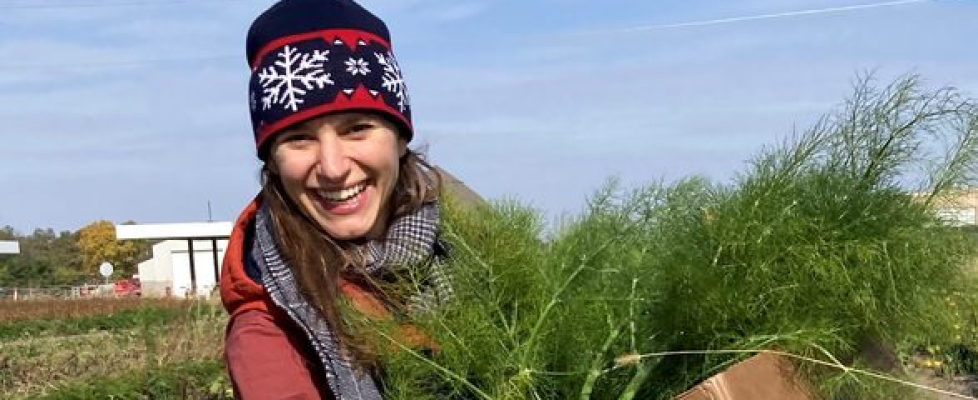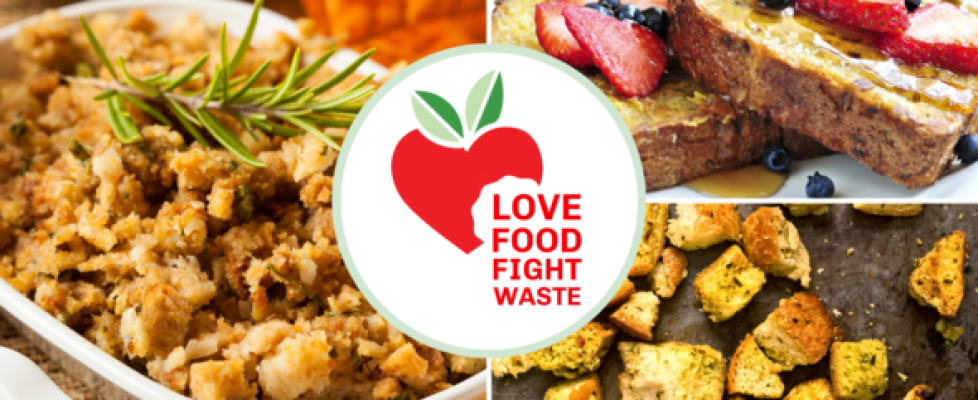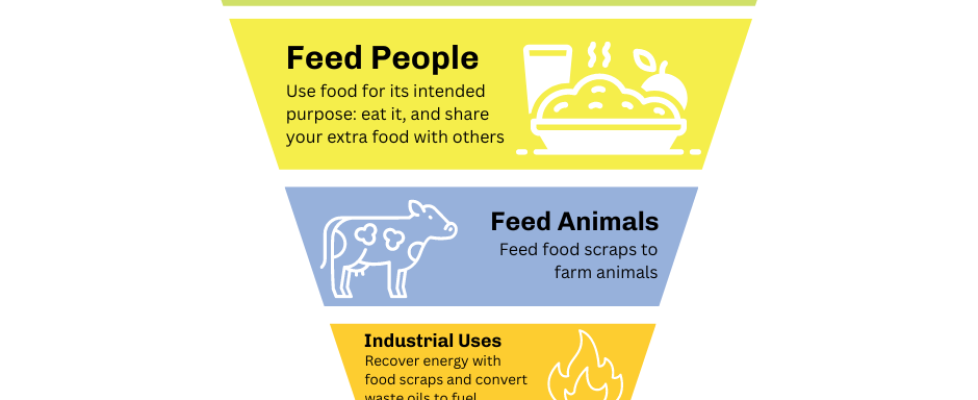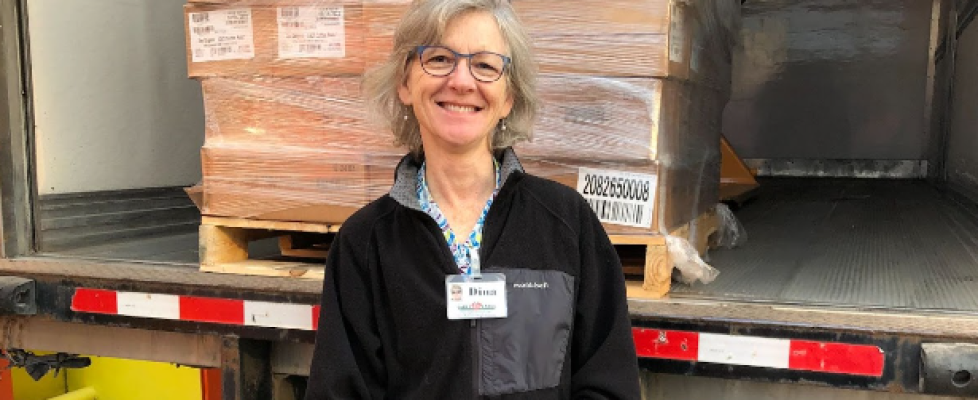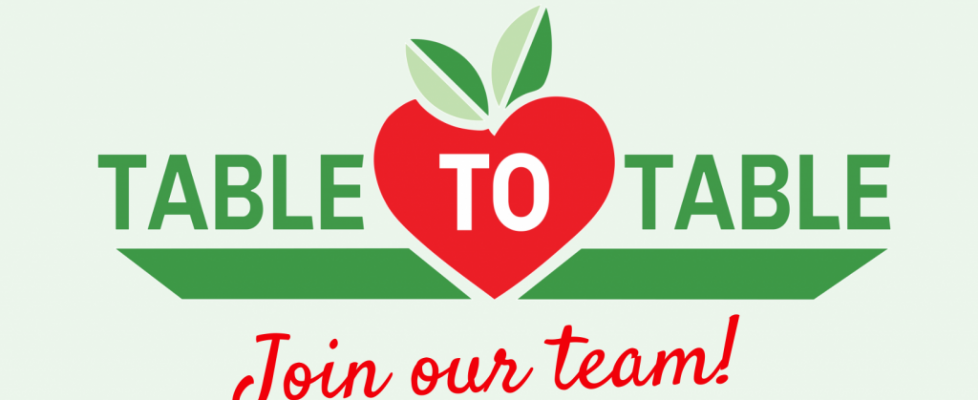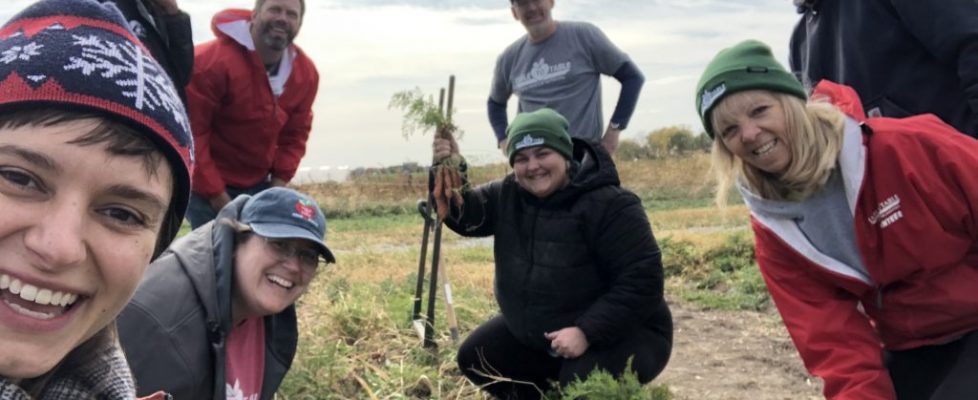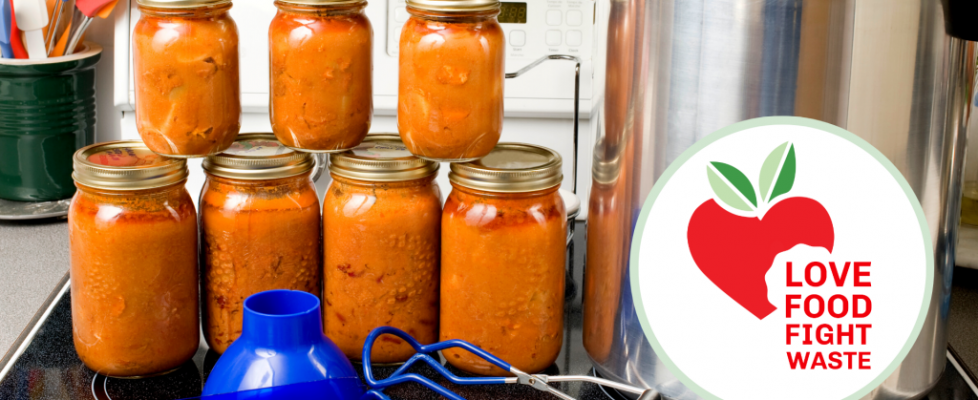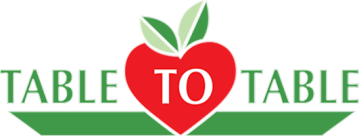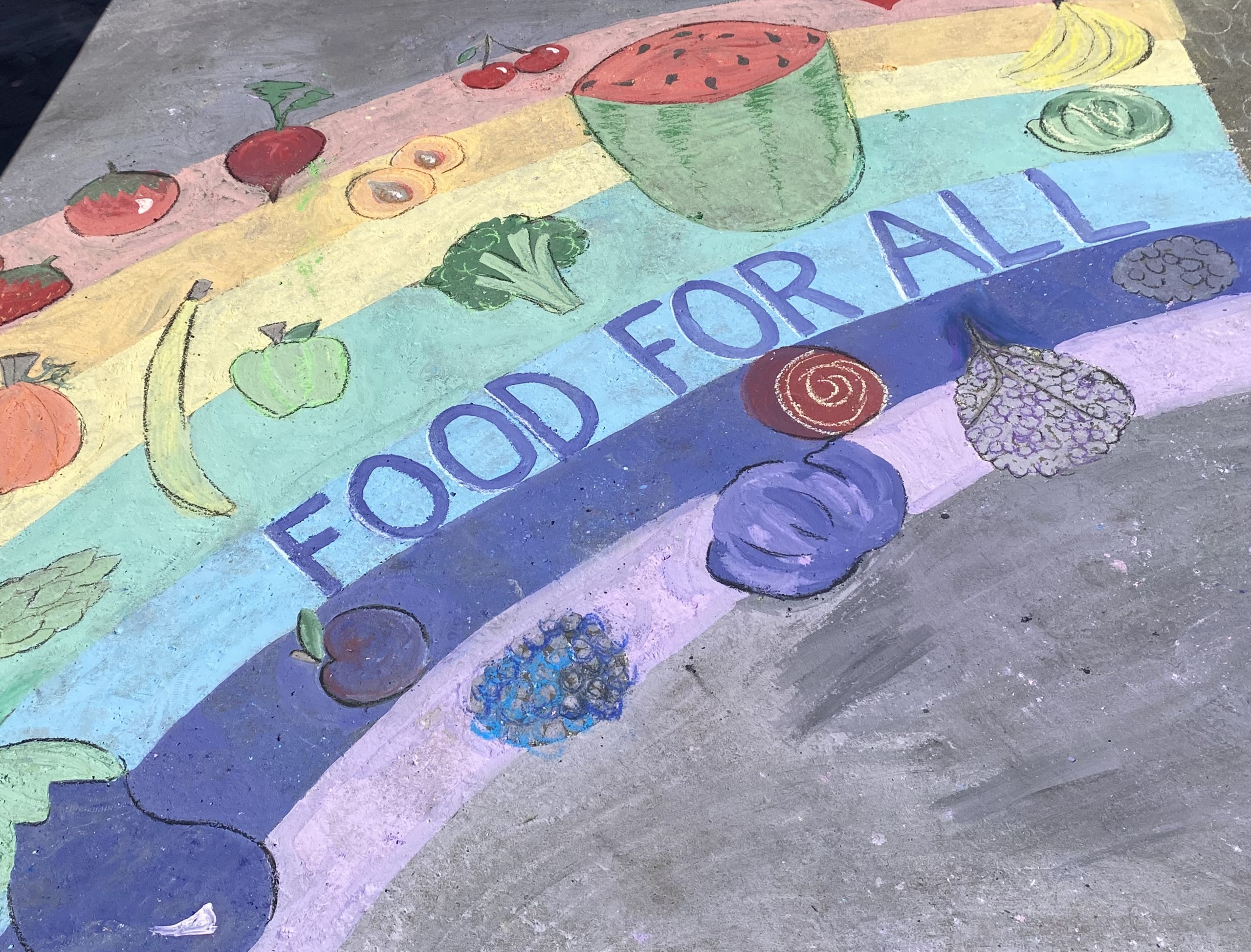
Delivering on Our Mission: 2024 Letter from the Director
This letter appears in Table to Table’s 2024 Impact Report, hitting mailboxes soon!
We’re fortunate to have had so many opportunities to capture food for our neighbors this year as the food safety net is stretched to breaking. We’ve seen firsthand how rising grocery prices—up 25% since early 2021(USDA)—have put additional strain on our neighbors. Looking back at our data from 2019, pantry visitors often needed food resources once per month or several times per year. In comparison, recent research by Johnson County public health shows that 79% of surveyed food pantry visitors reported they are now visiting a pantry 2 or more times a month. Meanwhile, SNAP benefits enrollment in Iowa is at a 15 year low. Low SNAP enrollment can be a product of multiple factors, including application & recertification barriers, low benefit amounts, as well as asset tests and income limitations that prevent more people from qualifying. One thing is for certain, we know it is not because there are less people facing hunger in Iowa. The pressing need for food in our community spurred our staff and volunteers to work harder and dedicate more hours to food recovery than ever before. As a result, we delivered 2.7 million pounds of food this year, an increase of half a million pounds! Sixty percent of that additional food was produce, protein, and dairy.
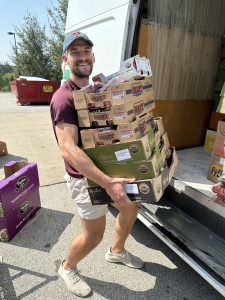
We celebrate the dedication of our volunteers and partners and the impact of all the food they’ve distributed. We also celebrate you, our community, providing such a crucial foundation to our work. Although food rescue is unpredictable, it is thanks to all of of you that we are primed to respond to every food opportunity and the changing needs of our community. And while every pound of food matters, our work is so much more than that number. We recover food and deliver on our mission with a core set of values that center people, community, and the strong connections we build and maintain. These values guide our efforts to reclaim food, reduce food waste, and address food insecurity while promoting respect, empathy, collaboration, and love in all aspects of our work.
With your support, we can continue to fight food insecurity and build a more connected, compassionate community.
Nicki Ross
Executive Director
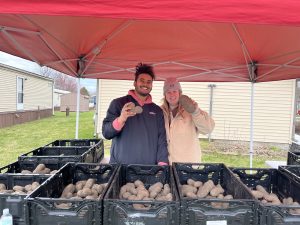
Table to Table bridges the gap between abundance and hunger. Our mission is to increase food equity and reduce environmental harm by collecting and redistributing surplus food through partners to people who can use it.
We couldn’t have accomplished all that we did in 2024 without our dedicated team of volunteers, board members, staff, and AmeriCorps members.
FY24 Board of Directors
- Sue Andrews
- Brad Berentson, Treasurer
- Betsy Boyd
- Andrew Coghill-Behrends, Secretary
- Jennifer De La Cruz
- Cristy Fehlberg
- David Frisvold
- Todd Gibson
- Kaily Hoard, Chair
- Tom Jepson
- Molly Johnson
- Mary Kelley, Vice Chair
- Tasha Lard
- Patty Meier
- Cindi Schrock
- Rajni Vijh
- Leslie Yoder
FY24 Staff Team
- Nicki Ross, Executive Director
- Allison Gnade, Program & Services Manager
- Chaim Jensen, Logistics & Relationships Coordinator
- Jared Long, Volunteer Coordinator
- Elizabeth Wagner, Operations Coordinator
- Anne Langebartels, Communications & Development Coordinator
- Gina Hudson, Dispatcher (through March 2024); Yesenia Sanchez, Dispatcher (March-July 2024)
- Celia Eckermann, Bookkeeper & Administrative Assistant
- Sheila Boyd, Donor Relations Manager
FY24 AmeriCorps Service Members
- Lisa Truong 2023 Summer GreenIowa AmeriCorps
- Marquis Heard, 2023-2024 GreenIowa AmeriCorps
- Jada McDonald 2024 Nourish Iowa VISTA
- Emma Duncan 2024 Summer GreenIowa AmeriCorps
- Noah Thomas 2024 Summer AmeriCorps
- Adam McFee 2024 Summer AmeriCorps
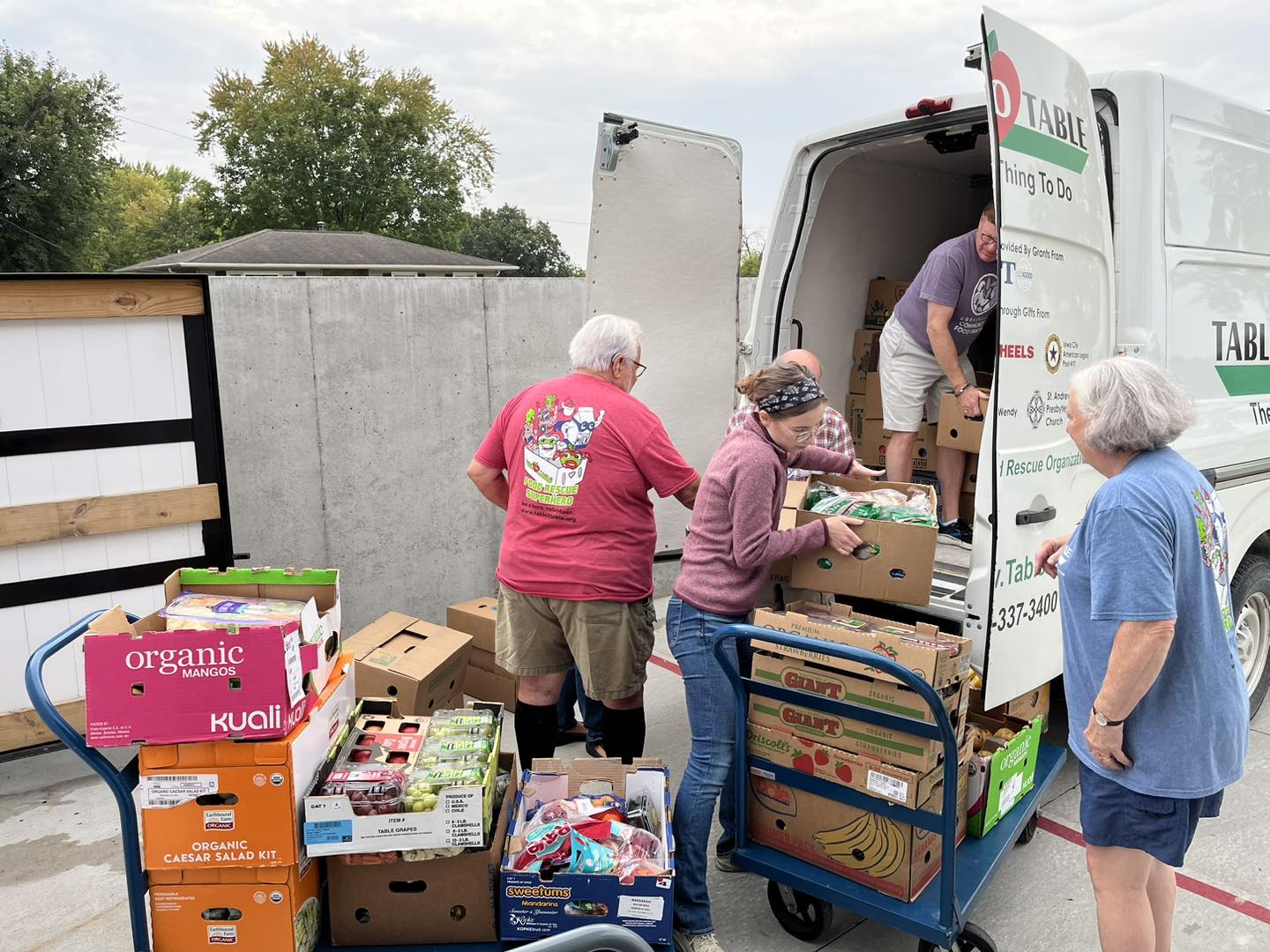
2024 Food Rescue at a Glance
This content appears in Table to Table’s 2024 Impact Report!
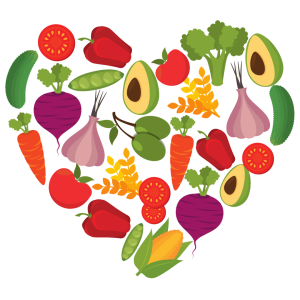
T2T rescued 2,767,737 pounds of food this year, a 21% increase over the previous year.
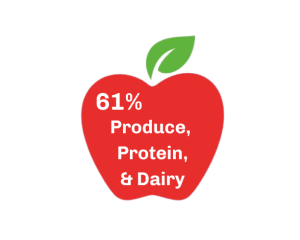
61% of the food we rescued was produce, protein, and dairy.

180+ stores, warehouses, processors, farms, markets, and cafeterias donated food.
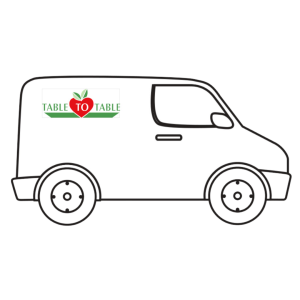
T2T coordinated
13,469 food pickups and deliveries.
Volunteers rescued food from grocery stores, warehouses, & dining halls on 2,529 routes.
85% of the food that Table to Table distributes goes to emergency food relief partners who served 38,000 individuals this year. 20% were children.
Food Recovery Specialist Noah Thomas Reflects on the Dynamic Nature of His Green Iowa AmeriCorps Role
Noah Thomas joined the Table to Table team in June of 2024 as a Summer term Green Iowa AmeriCorps service member. He served as a Food Recovery Support and Training Specialist, becoming the point person for assisting with day-to-day tasks and challenges such as last-minute routes, leading weekly partner pickups, and other various projects to help streamline operations. Noah says of his role, “At T2T, you never know what challenges will pop up. This enabled me to become a more flexible and prepared worker so I could fill the needs of the task at hand.”
Noah is a student at the University of Iowa entering his third year as a triple major in Political Science, Ethics, and International Relations. He came into his service term with a curiosity and passion for the food recovery system and said of his time at Table to Table, “It has been a rewarding and impactful employment experience, more so than any other position I have held.”
Upon completing his service term, Noah took the time to reflect on some of his specific experiences and how his time at Table to Table impacted him.
One of the most memorable experiences was our special Chipotle pickups. A new location for the restaurant opened up in Coralville and they contacted T2T to do 8 special pickups for specific times. The training for their new employees entailed simulating a normal workday, during which they produced a large amount of prepared food that would be wasted if not picked up by T2T. One of the two daily pickups was to be done at 8:30 pm. I took part in 3 of the 4 night pickups with other AmeriCorps members. It was a fun experience to rescue that much food, and our partners were very happy to receive it.
I feel what made serving at T2T so enjoyable was the people. The other AmeriCorps members, T2T staff, our dedicated volunteers, and those from our partner organizations who work so hard to serve the public are all people whom I interacted with daily. All of these people brightened my day in different ways. Knowing that what we were doing was helping the community made it feel like less of a job. It was never something to be dreaded, in fact I consistently looked forward to every day I spent at T2T. I truly think the most challenging aspect of working at T2T will be leaving.
Although his three month term flew by in the blink of an eye, Noah claims his short time at Table to Table sparked a shift in perspective that restored his hope that there are truly good things and good people out there. Because of this he has decided to continue as a volunteer following his service term. Thank you, Noah!
Emma Duncan Discusses Her Impactful AmeriCorps Experience at T2T
Table to Table welcomed Emma Duncan to the team in June of 2024 as one of our Summer term Green Iowa AmeriCorps service members. During her service here, Emma helped us rescue 340,267 lbs. of produce, much of which was distributed to our neighbors at our weekly Free Produce Stands, a program she devoted much of her time to developing and 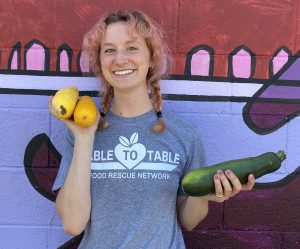
With a Master’s degree in Sustainable Development from the University of Iowa, and an undergraduate background in business, marketing, and environmental studies, Emma came to us with an existing interest in sustainable practices and lots of valuable experience that made her a great asset to our team. Coming into her service term, Emma’s goals were to learn more about the local food system, as well as improve her communication and planning skills. “My Table to Table experience exceeded these expectations. I gained confidence in my decision-making skills and developed a sense of agency that really took me by surprise,” Emma commented on the ways in which she grew both personally and professionally.
Upon concluding her service term, Emma took some time to reflect on her experience in food rescue and the ways in which Table to Table helped her achieve these goals:
In my last week of service, another AmeriCorps member and I organized a last-minute adjustment to a route so that we could collect over 700 pounds of watermelon. At the beginning of my term, I would not have felt comfortable making the call on whether I had the capacity to make such a large impromptu rescue, however, my improved decision-making skills helped me feel confident in my decision. I also found my interactions with volunteers, staff, and the community extremely rewarding and important to fine-tuning my communication skills. Additionally, I gained insights into community needs, received career and life advice, and laughed countless times all while contributing to a deeply impactful cause.
Despite serving at Table to Table for less than three months, Emma cites her experiences here as immensely impactful, especially from the perspective of transitioning from higher education to the workforce. “Thank you to the Table to Table staff, volunteers, AmeriCorps members, and partners!” No, thank you, Emma!
Adam McFee Reflects on Time at Table to Table as Gleaning Coordinator

Adam has plans to graduate from the University of Iowa in the Spring of 2025 with a degree in Environmental Policy and Planning. He came to us with previous experience working with Iowa produce farms and volunteering at the University of Iowa Food Pantry, as well as an existing interest in food systems and security. This made him an enthusiastic, motivated, and insightful addition to our team.
Upon completing his service term in August, Adam took the time to reflect on his experience and impact at Table to Table.
From the start of the summer, the training process felt very deliberate. I found that beginning training with the big-picture presentation on the Table to Table mission really got me motivated and I began to understand what my role would be on a day-to-day basis. Marquis was super important at first for getting started and offered lots of insight on glean-specific information. Most of the growers I gleaned with this summer had been found and contacted before I started, which I owe to Marquis, he really had the program on its legs before I started.
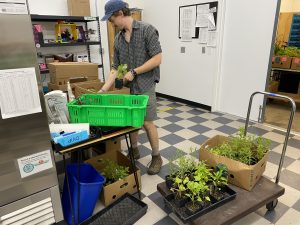
Adam took the liberty of compiling and analyzing all the data he collected from his time as Gleaning Coordinator, offering valuable insight and suggestions for the ongoing development of our gleaning program. His dedication and thoughtful, deliberate approach to his work made a huge impact on Table to Table and the growth of our gleaning program. Thank you, Adam!

